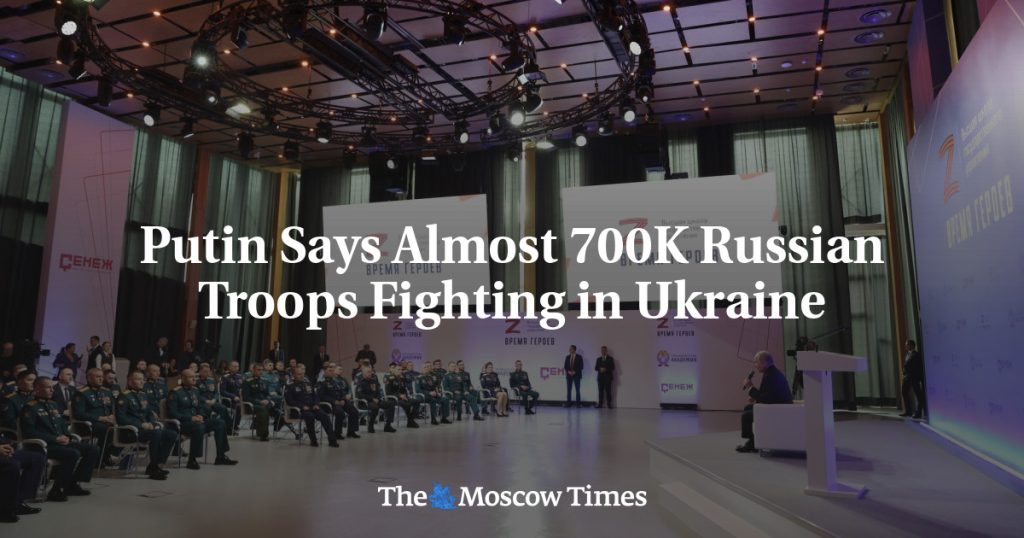Russian President Vladimir Putin recently announced on television that almost 700,000 Russians are currently fighting in Ukraine. This is an increase from the figure of 617,000 that Putin mentioned at his end-of-year press conference in December. Of those fighting in Ukraine, 244,000 have been mobilized. The latest figure on troop numbers was revealed after Russia launched a major ground assault in Ukraine’s Kharkiv region in May.
Despite the significant number of Russian troops involved in the conflict, Moscow rarely discusses the losses it has sustained in Ukraine, still referring to the situation as a “special military operation.” The last official figure for Russian military deaths was in September 2022 when 5,937 soldiers were reported killed in combat. However, independent analyses and Western intelligence services suggest that Russian casualties may actually be much higher, potentially well into the tens of thousands. Despite these losses, Russia maintains a manpower advantage over Ukraine in the ongoing conflict.
In response to staffing and morale issues within Ukraine’s military, Ukrainian President Volodymyr Zelensky has made efforts to increase recruitment and tighten punishments for those avoiding the call-up. Measures such as lowering the draft age and enhancing reserves have been implemented to address the challenges faced by Ukraine’s forces, which often find themselves outnumbered and outgunned by Russian troops. Zelensky acknowledged the need to fill empty brigades and strengthen the overall army, as he aims to address the ongoing military conflict.
Zelensky has been vocal about the toll of the war on Ukraine, revealing that around 31,000 Ukrainian soldiers had been killed in the first two years of the conflict. This high casualty figure underscores the severity of the situation and the sacrifices made by Ukrainian forces in their defense against Russian aggression. Despite these challenges, Zelensky remains determined to strengthen Ukraine’s military capabilities and resilience in the face of continuing hostilities, as the conflict in Ukraine shows no signs of abating.
The ongoing war in Ukraine has been marked by intense fighting and significant casualties on both sides. The conflict, which began in 2014 with Russia’s annexation of Crimea, has since evolved into a broader military confrontation between Russian and Ukrainian forces. The situation remains highly volatile, with both countries sustaining losses and facing challenges in maintaining their military readiness and capabilities. The conflict has drawn international attention and condemnation, as efforts to reach a peaceful resolution have so far been unsuccessful.
The high number of troops involved in the conflict highlights the scale of the military operation and the ongoing commitment of both Russia and Ukraine to their respective goals. Despite the human cost of the conflict, both sides appear determined to continue fighting, raising concerns about the potential for further escalation and loss of life. The international community continues to monitor the situation closely, urging diplomatic solutions and efforts to de-escalate tensions in the region. The conflict in Ukraine remains a complex and challenging issue, with no easy resolution in sight as hostilities persist and casualties mount on both sides.


